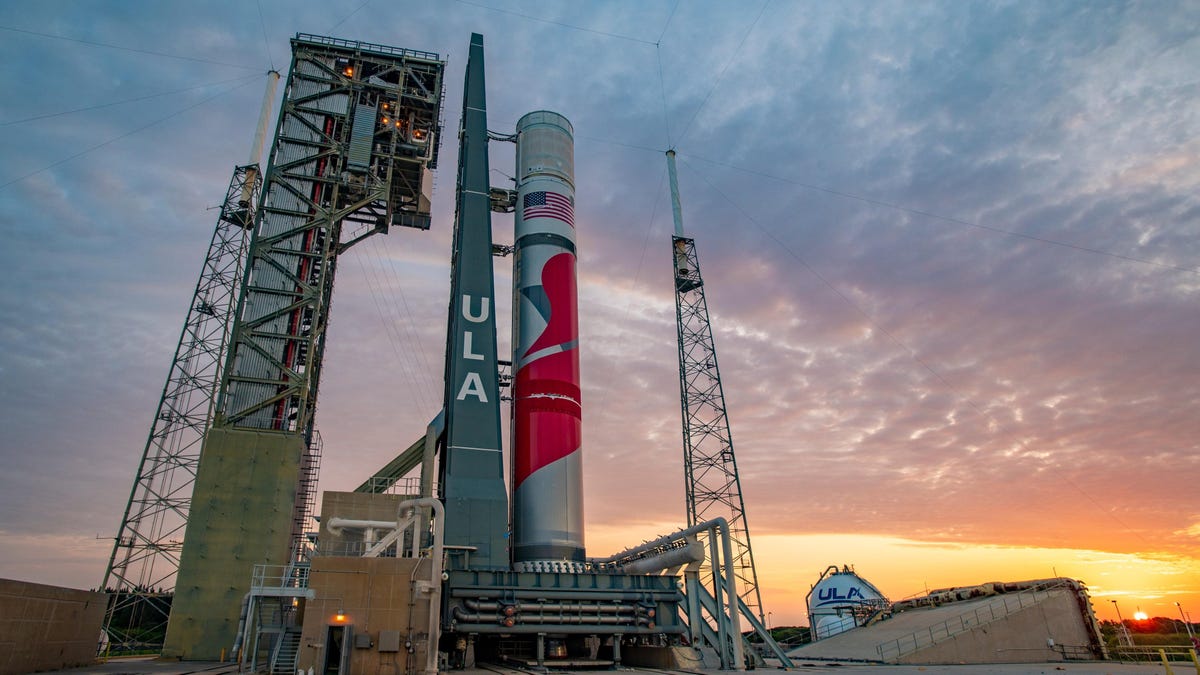
The Colorado-based company had originally scheduled Vulcan’s static fire test for May 25 but ended up rolling the rocket from its launch pad back to the Vertical Integration Facility due to an issue with its booster engine. A “delayed response from the booster engine ignition system” during countdown forced ULA to halt the static test, with the system requiring “further review prior to proceeding with the flight readiness firing,” the company said in a tweet.
Advertisement
Advertisement
The company has had a bumpy ride in trying to see its rocket fly for the first time. The highly-anticipated debut of ULA’s Vulcan Centaur was originally scheduled for May 4. Two weeks before liftoff, however, a fiery explosion swept over the rocket’s test stand at NASA’s Marshall Space Flight Center in Alabama while engineers were pressurizing its upper stage.
Vulcan’s maiden flight had already been delayed several times, with ULA initially hoping to launch its rocket in 2020 and then again in 2022. The rocket’s first stage is powered by two BE-4 engines built by Blue Origin, which were delivered more than four years past the deadline, contributing to the delay of Vulcan’s inaugural flight.
The fully expendable 202-foot-tall (62-meter) rocket is set to replace ULA’s Atlas V and Delta IV rockets, which have been in use for the past two decades. The Vulcan Centaur is designed to lift 27.2 metric tons (60,000 pounds) to low Earth orbit and 6.5 metric tons (14,300 pounds) to geosynchronous orbit. The BE-4 engines run on a mixture of liquid methane and liquid oxygen.
During its flight readiness test, the rocket won’t actually get off the ground. Instead, engineers will load up the Vulcan Centaur rocket with fuel and fire up its twin booster BE-4 engines. The point of the test is to go through launch countdown and procedures, sort of like a rehearsal for launch day to make sure everything goes according to plan.
Advertisement
If it aces the test, Vulcan Centaur will be ready to fly for the first time. The rocket’s first mission will attempt to deliver Astrobotic’s Peregrine lunar lander, which, on behalf of NASA, is designed to deliver 11 payloads to the surface of the Moon. Vulcan Centaur is also carrying the first two Amazon Kuiper internet satellites, which are supposed to be delivered to low Earth orbit.
ULA needs to complete two Vulcan flights in order to get certified to launch U.S. military and intelligence satellites for the Space Force. The company is under contract to deliver 35 missions for the U.S. Space Force in the next five years. The Vulcan rocket is also booked to launch more of Amazon’s internet satellites.
Advertisement
For more spaceflight in your life, follow us on Twitter and bookmark Gizmodo’s dedicated Spaceflight page.
Services Marketplace – Listings, Bookings & Reviews